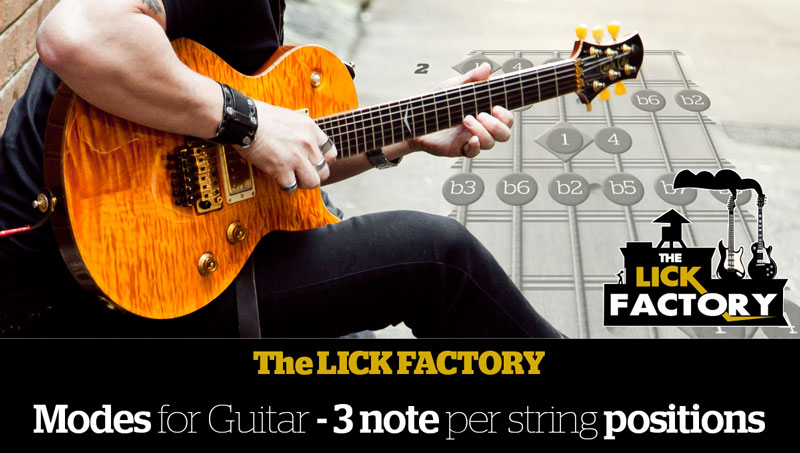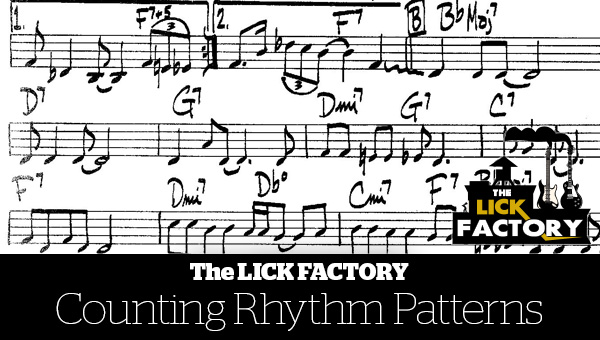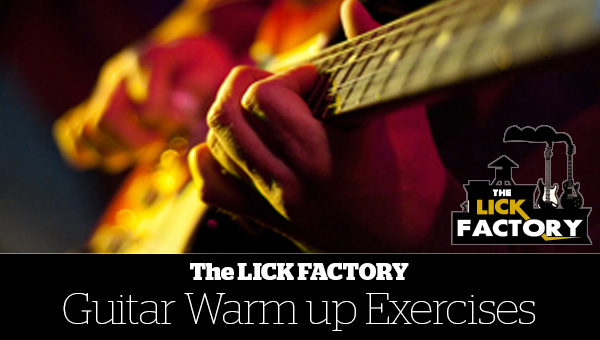Modes for Guitar – 3 notes per string
Extend your modes for guitar using these 3 note per string scales. Being able to think about your modes for guitar in a variety of different positions, will assist you in completely unlocking the fret-board.
In our previous lesson on modes for guitar, we looked at what modes are and where they come from. Being able to understand the fundamental concept behind modes is of extreme importance if you are to successfully use them in your improvisational technique.
In this tutorial, we’ll be taking another step forward in understanding modes for guitar as well as the 3 note per string positions for each scale.
To recap on our previous lesson, there’s two ways that you can think about modes for guitar. The first is to treat each mode as a completely separate scale. The second is to treat each mode as an individual position of one scale covering the whole fret-board. This thought process would then immediately give you seven accessible scale positions for each and every mode. For example the individual modes in C are C Ionian, D Dorian, E Phrygian, F Lydian, G Mixolydian, A Aeolian and B Locrian. But we could also treat the C Ionian as a C Major position 1, the D Dorian as a C Major Position 2 and so forth. This way what you end up with is 7 scales with 7 positions for each. You will only require a simple shift in mindset to apply the modes when improvising.
Like chords, being able to think about modes in a variety of different positions will assist you in completely unlocking the fret-board. As you develop as a player your dependancy on block position scales will dissipate and the entire range of the fret-board will become available to you.
The three note per string positions will help you develop your modes for guitar in a couple of ways. The first is in linking your modes together into once large body of notes that can be treated as any of the 7 modes. The other is to help you develop your speed runs. 3 note per string guitar modes automatically gives you an upper hand when going for legato speed runs.
The 3 notes on each sting allows simple use of hammer on’s and pull off’s. Using these techniques allows you to gain a lot more speed without having to worry about your picking hand keeping up. Having said that, i also recommend developing these scales using both hammer and pull off techniques as well as alternate picking. You will need both in your arsenal to ensure your clean execution of runs.
The 2nd area that these positions help you in is the deployment of triplet rhythmic patterns. Having a scale position that falls in to consistent three’s lends itself to the use of triplets quite easily. If it’s an area that you have yet to explore, I’d definitely suggest playing around with triplets here.
Modes for Guitar – 3 notes per string positions
As we did in the block positions lesson for this same topic, we’ll be looking at each mode from the perspective of G Major. Remember that these modes for guitar are moveable. Sliding the same scale position up and down the neck will change the key each time.
These diagrams illustrate each of the 7 modes for guitar as 3 note per string positions. The numbers within the fret dots represent the scale degrees comparative agains the major scale or Ionian mode. The Orange diamond markers highlight the tonic in relation to the key (G Major).
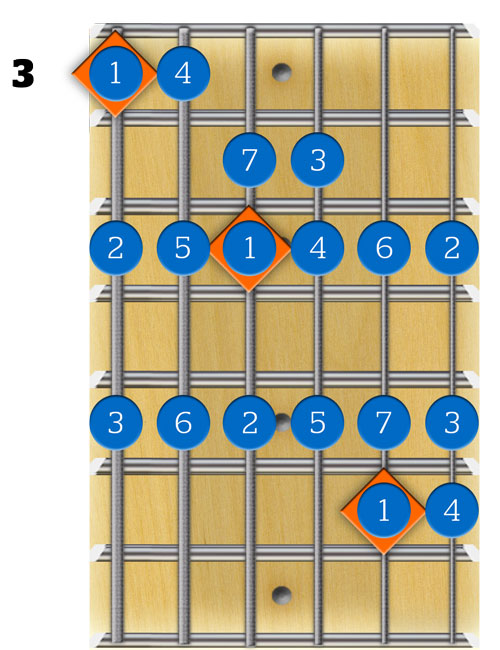
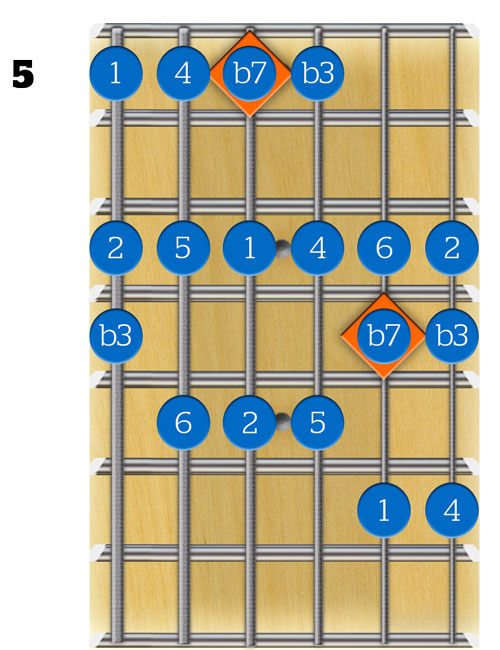
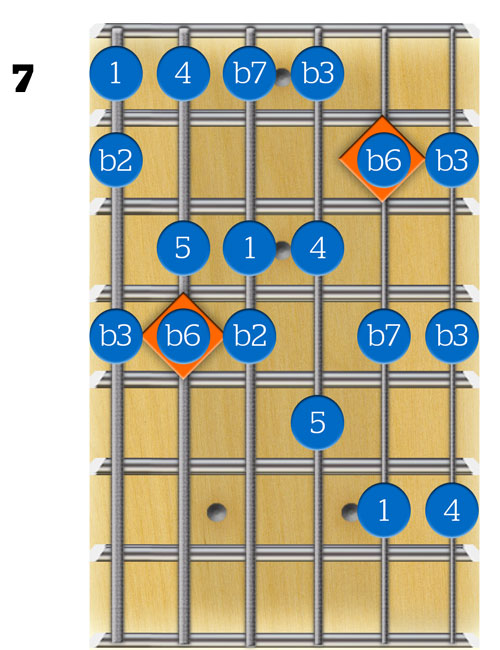
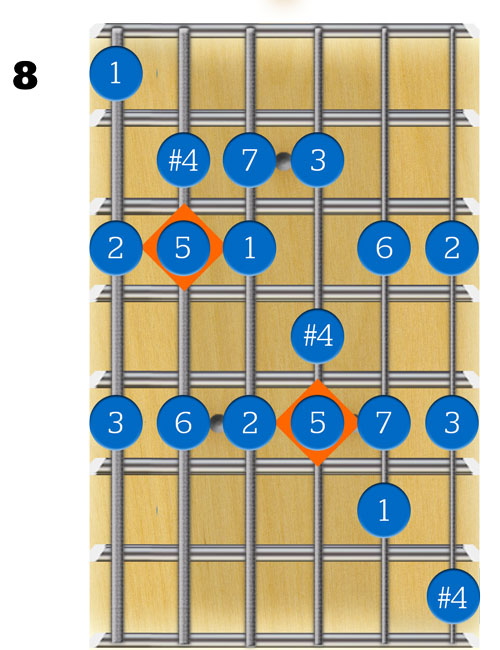
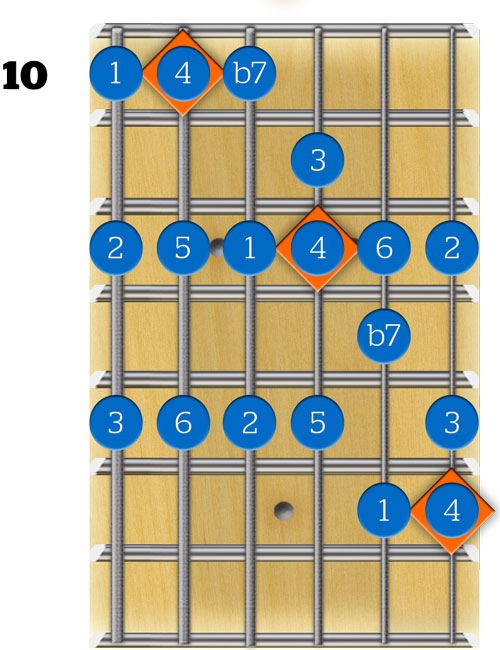
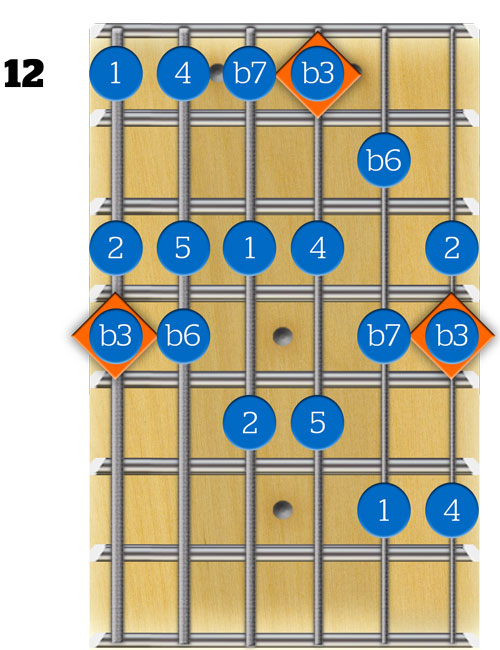
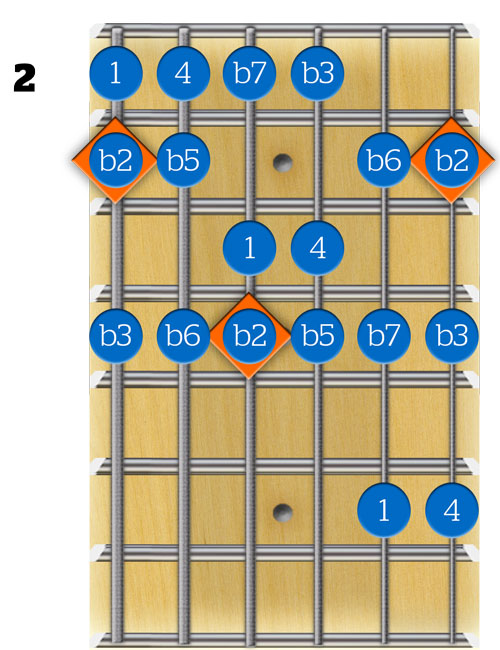
This article touches on concepts from the LICK FACTORY’s Set 1 and Set 2 courses. Bring your chord playing up to a completely new level.
Need a quicker fix? the ULTIMATE CHORD GUIDE: Volume 1 might be the answer.
Who’s your Teacher?
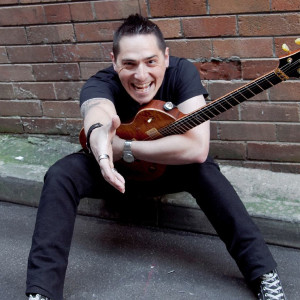
Kris Petersen is a name that has become synonymous with the Australian Music Industry. From clubs to stadiums, Kris has performed on every continent in the world and shared the stage with some of the world’s greatest artists.
In the last few years alone, Kris has performed with, or alongside Alice Cooper, Aerosmith, Orianthi, Van Halen, Billy Joel, Matt Sorumn (Guns n Roses), Eric Martin (Mr. Big), The Drifters, Tony MacAlpine, Buckcherry, Daryl Braithwaite, The Living End, Icehouse, Marcia Hines, The Screaming Jets, The Choirboys, Mental As Anything, Bruce Kulick (KISS), Leo Sayer, Pretty Boy Floyd and many more… read more


